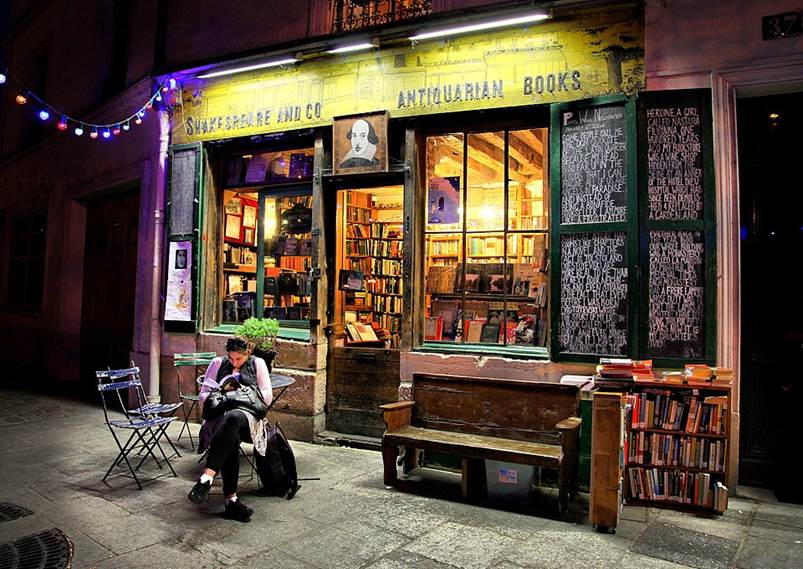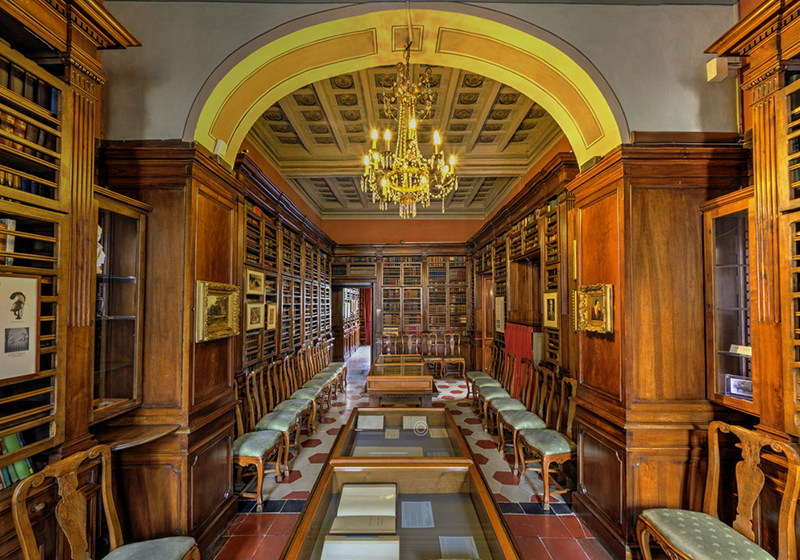Table of Contents
Five of Europe’s best literary travel destinations for book nerds
Literary tourism is booming, fuelled by the book club revival, social media phenomena like BookTok and Bookstagram, and IRL events like reading parties.
After pandemic-imposed isolation, bibliophiles are rediscovering the joys of doing things together in real life – not just reading and talking about books, but visiting the places described in the pages of their favourite novels through literary tourism. Many book clubs, BookTokers and Bookstagrammers also devise travel itineraries inspired by famous writers and novels, taking in sights such as the houses authors lived in and the places they set their novels, as well as the world’s best libraries, bookshops and literary festivals.
Tour operators have long been in on the act too, offering packages that promise exclusive experiences in places where famous novels are set. Since 2006, Smithsonian Journeys has been creating themed itineraries aimed at fans of different genres of fiction. For example, “Mystery Lover’s England” is a tour for whodunnit nuts that explores the life and works of great English crime writers in the company of experts and contemporary thriller authors.
Literary tourism owes its success to two factors: it offers book lovers an immersive experience that blurs the boundaries between fiction and reality. And it brings together like-minded people so they can bond over a shared love of a novelist or literary genre.
Time to check out some of the best literary travel destinations: magical places steeped in history where bibliophiles can indulge their passion and – who knows? – perhaps find inspiration for their own writing.
Strahov Library, Prague
Inside Prague’s Strahov Monastery, an institution dating from the 12th century, lies Europe’s most spectacular baroque library. This architectural gem holds over 200,000 books, including thousands of ancient prints, manuscripts and incunabula, as well as an extraordinary collection of terrestrial and celestial globes produced between the 17th and 19th centuries.
Built between 1671 and 1679, the Strahov Library’s Theological Hall houses more than 18,000 volumes of mainly religious texts, as well as a superb example of ‘library engineering’: the so-called compilation wheel, an ingenious desk with rotating racks that allow the reader to consult multiple books at once.

Next door, the classically styled Philosophers’ Hall is dedicated to works on medicine, law, philosophy, mathematics, geography, astronomy and the natural sciences. It’s here you’ll find an incredibly rare dendrological library that has a collection of books about tree species, but with a remarkable twist: each book is made from the wood of the very tree it talks about! There is also a fascinating cabinet of curiosities displaying fossils, minerals, stuffed exotic animals and scientific instruments from yesteryear.
To step inside these hushed and hallowed halls, you must book a ticket in advance, but this only adds to the mystique of this magical seat of European culture.
Shakespeare and Company bookshop, Paris
The first Shakespeare and Company bookshop was founded by American student Sylvia Beach on Rue Dupuytren, Paris in 1919. Frequented by the likes of James Joyce, Ernest Hemingway and F. Scott Fitzgerald, it soon became a bastion of Anglo-American culture in France. A literary luminary in her own right, Sylvia Beach was instrumental in bringing James Joyce’s Ulysses to bookshelves: it was she who, recognising its genius, published the novel after it had been rejected by mainstream publishers for its supposed obscenity and incomprehensibility. Alas, in 1941, Shakespeare and Company was forced to close by the invading Nazis, who arrested Beach and imprisoned her in a concentration camp.
Happily, the bookshop would return later in a different guise. In 1951 George Whitman, another American studying at the Sorbonne, opened a new bookshop called Le Mistral in Rue de la Bûcherie. At the end of the 1950s, Whitman bought the Shakespeare and Company name from Sylvia Beach. Shortly after her death, he renamed Le Mistral bookshop Shakespeare and Company. Whitman wanted to champion culture just as Beach had, and continued her tradition of holding readings and events with authors and intellectuals from around the world.

These days, Shakespeare and Company is run by Whitman’s daughter, who remains committed to putting on free public events that promote English literature. Inside the shop, you can still see the beds that George Whitman offered to young intellectuals seeking lodging, not to mention thousands of notes left by visitors from across the globe. The cafe next door is the perfect spot to bury yourself in a book or flick through English-language magazines with a cup of tea and a piece of (Anglo-Saxon-inspired) cake.
Keats-Shelley House, Rome
Beside the Spanish Steps in Rome stands a villa that is a place of pilgrimage for devotees of British romantic poets: the house where John Keats spent his last days. Today, it is a museum hosting a collection of paintings, sculptures, manuscripts and other works by Keats and his fellow romantic poets, Percy Bysshe Shelley and Lord Byron.
At Keats-Shelley House, you can see the two rooms rented by Keats and his friend Joseph Severn, as well as the lounge – occupied by landlady Anna Angeletti at the time – and a small terrace looking out onto the Spanish Steps.

The library, which is constantly updated with new titles, holds over 8,000 books, among them first editions of the works of Keats and Shelley, and a collection of travel writing about grand tours. The library’s books can be consulted upon request, while the house can be viewed by booking a guided tour.
Livraria Bertrand, Lisbon
On 73 Rua Garrett, Lisbon, lies an obligatory stop on any book lover’s itinerary: Livraria Bertrand, the world’s oldest bookshop. Although today owned by a major Portuguese chain, it still retains all the magic and charm of a place where time has stood still. Here the intoxicating smell of books and antique wood hits your nostrils as you browse its comprehensive catalogue of titles in Portuguese, English, Spanish and French.
Founded in 1732 by Pedro Faure, with brothers Pierre and Jean Joseph Bertrand later joining the business, the bookshop has witnessed countless historic events, not least the devastating earthquake of 1755, which levelled swathes of the city, the bookshop included. Indeed, following this calamity, it wasn’t until 1773 that Jean Joseph Bertrand reopened the shop at its current location on Rua Garrett. Over the centuries, Livraria Bertrand has been a favourite haunt of great Portuguese writers such as Alexandre Herculano, Eça de Queirós and Fernando Pessoa, and has become a cultural institution in the city.
Top tip: when you buy a book from Livraria Bertrand, you can ask the staff to add a unique stamp attesting that it was purchased from the oldest bookshop in the world.
Libreria Altaïr, Barcelona
Founded in 1979, Libreria Altaïr in Barcelona has Europe’s largest collection of travel books. Its shelves hold over 60,000 titles of fiction, non-fiction, guides and atlases covering all four corners of the Earth, not to mention accessories, globes and cultural artefacts from around the world.
Here globetrotters and dreamers can find inspiration for their next adventure – real or imaginary – among the many maps, biographies of famous explorers, and hard-to-find guidebooks available in a variety of languages.

The bookshop holds events, conferences and photography exhibitions, and has a notice board – also available on the official website – where visitors can seek travel companions, advertise ride-shares or simply ask advice from other travellers. There’s also a travel agency inside that organises both bespoke trips and group tours all over the planet.
Got the literary tourism bug? Here’s our pick of handy guides and websites for arranging a trip inspired by your favourite authors.
Recommended reading
In Literary Places, travel writer Sarah Baxter digs into the history and culture of 25 literary travel destinations, exploring the ways they intersect with the lives of writers, their works and different literary movements. Complete with simple yet evocative full-page colour illustrations, this guide transports readers to the places described in their favourite novels or once inhabited by their best-loved authors.

Booked: A Traveler’s Guide to Literary Locations Around the World is a must-read for anyone in search of inspiration. It takes in 80 literary tourism destinations, from the misty Yorkshire moors of the Brontë sisters to the streets of James Joyce’s Dublin to the Paris cafés beloved by Simone de Beauvoir. For each of these literary places to visit, author Richard Kreitner explains its connection with the author and their fiction, as well as giving key historical details and interesting pieces of trivia.
Founded in 1998, Literary Traveler is one of the longest-running blogs dedicated to exploring the world through a literary lens. There you’ll find essays, diaries and itineraries inspired by literary travel destinations, from museum houses and monuments to the landscapes and neighbourhoods that serve as the backdrop to great works of fiction.
A Suitcase Full of Books is a blog that invites readers to follow in the footsteps of their favourite authors and characters by exploring the places where famous novels are set. In her compelling and personal style, blogger Elizabeth takes readers with her on literature-inspired trips around the world. Her blog is a gold mine for tips and inspiration for anyone who wants to combine their love of books with a passion for travel.
Our virtual tour of Europe’s best literary travel destinations ends here. Now it’s over to you: what’s on your book lover’s bucket list?

